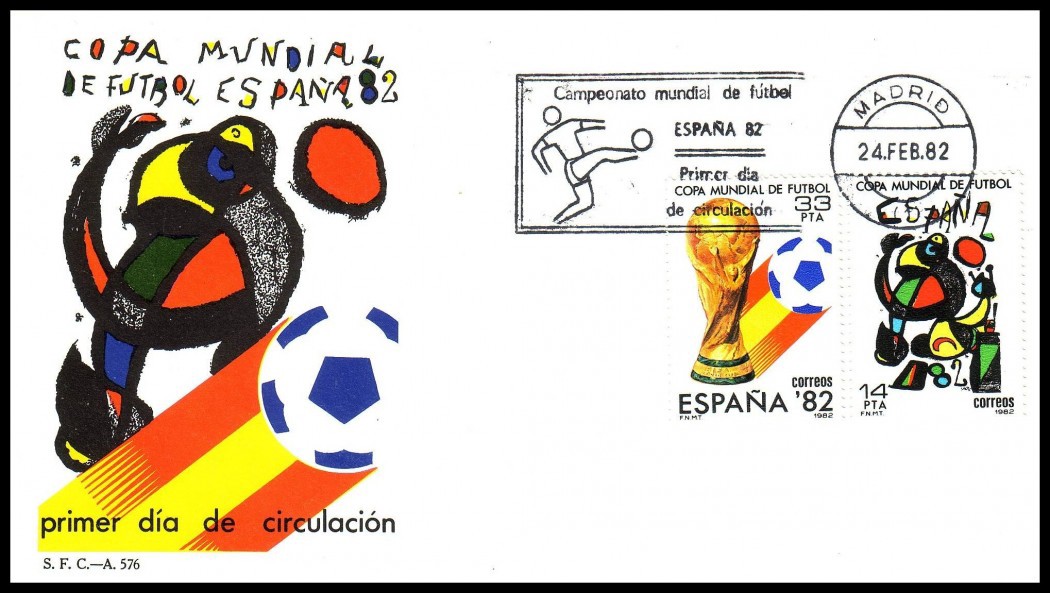G’OLÉ! Official film of the 1982 World Cup

World Cups are about soccer but about hosts, too. It’s just six years after the death of Franco, mere weeks after Spain joined NATO, and the country, like its national team, is catching up. A cultural and a sexual awakening is just ahead, and this tournament — the largest ever with 24 teams — is Spain’s great stride forward out of isolation.
Spain in 1982 may not have been as glamorous as England in the 1960s — patience, it would soon be swinging — and there are no shots of dashing, besuited players arriving on airport tarmacs as there are in Goal!, the 1966 World Cup documentary. And if G’olé! lacks the bravura cinematography of Goal! — Maradona’s slow walk to the touchline after his spiteful foul on Brazil’s Batista is affecting, and suggests fellow Argentine Rattín’s sending off in the earlier film, it lacks the sheer audacity of the panning shot — it is nearly equal in form, story-telling, and score.
Director Tom Clegg came out of British TV but he moves through the unwieldy tournament, often with camera at field level, with great assurance. Chapterettes on a young Maradona, on newcomers Cameroon, New Zealand, and Kuwait, and on the superlative Brazilians embroider light and dark into the narrative.
Stan Hey’s script — narrated by an understated Sean Connery, his career resurgent after 1983’s return to 007 — is also a departure from the patronizing incorrectness of, say, Heading For Glory, the 1974 World Cup film. In 1974, Australia was made up of “jolly swagmen,” Zaire “leopards from the steaming Congo basin.” In G’olé!, New Zealand is “a team of amateur players who must tonight play another amateur side, the Soviet Union.” And Cameroon “played with the same carefree quality as their singing…. The memory of their football will linger.”
And there’s wit: Eder is “the playboy winger with a wicked curling shot” who “dances lazily forward”; Gentile “is the sort of guy that tries to swap shirts during the match”; French coach Hidalgo “improved squad spirit by sending home Larios, who had been having an affair with the captain’s wife, Madame Platini. Football isn’t always about diagonal runs.”
The score by Rick Wakeman has no hint of the Deodato-esque keyboard flourishes of other World Cup (and porn) films past. When the camera turns to the Germans — who got to the semifinals by “a devious route. An astounding first-phase defeat to Algeria required a squalid, non-aggressive pact against Austria to get through” — the music turns urgent and menacing. (Which is fitting: if there’s a villain in G’olé!, it’s Toni Schumacher, for the following play.)
Spain would eventually conquer the soccer world, accomplishing what no other modern national team had ever done by winning three consecutive major tournaments. But its trajectory may well have begun long ago, when it invited the world in and we all watched.
Michael J. Agovino is the author of The Soccer Diaries: An American’s 30-Year Pursuit of the International Game, which was published in June. Follow him on Twitter @SoccerDiarist.
This essay was originally published in Howler Issue 05 under the headline “Spain Emerges, France Loves, Italy Wins.”
Photo by Footysphere
